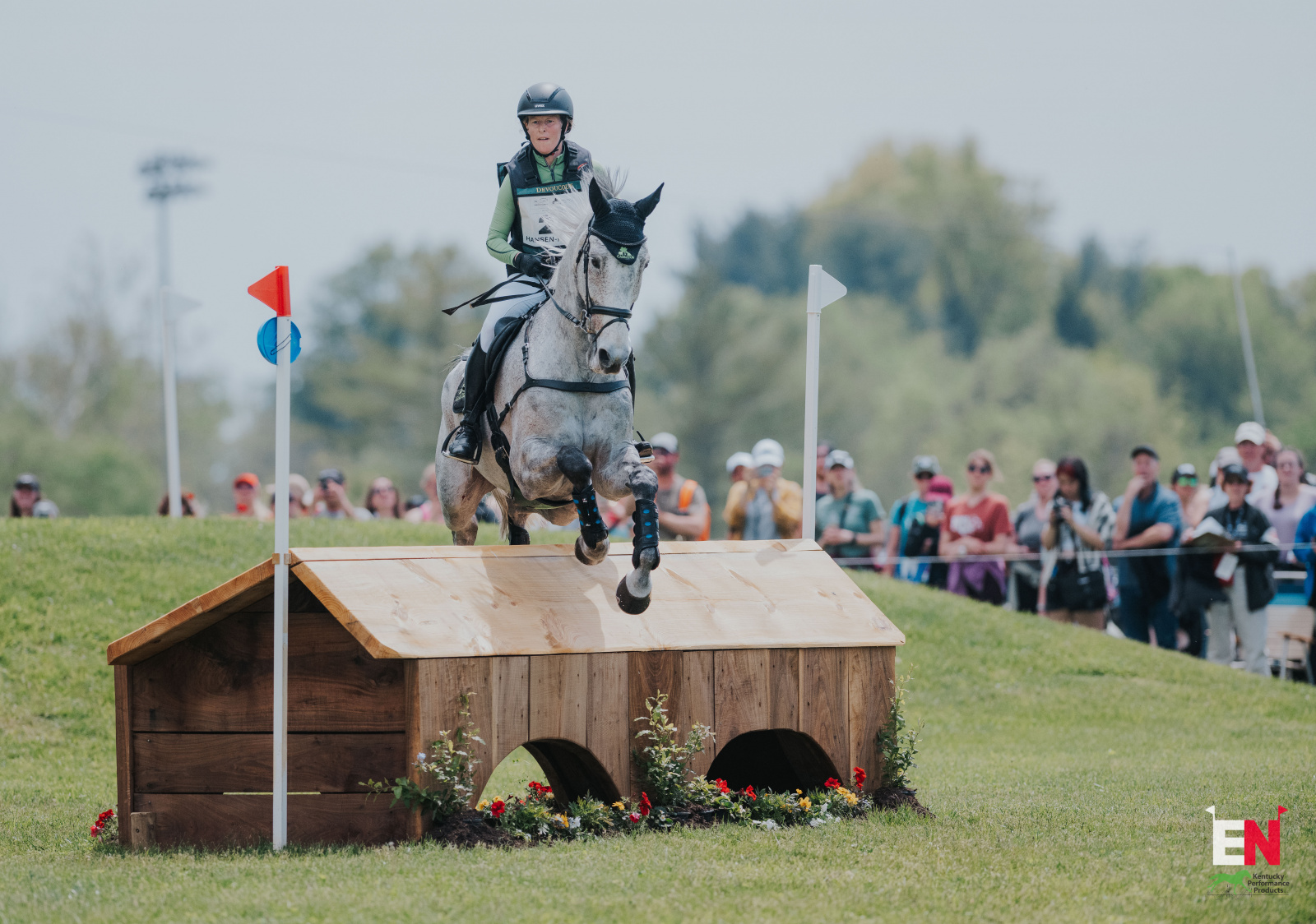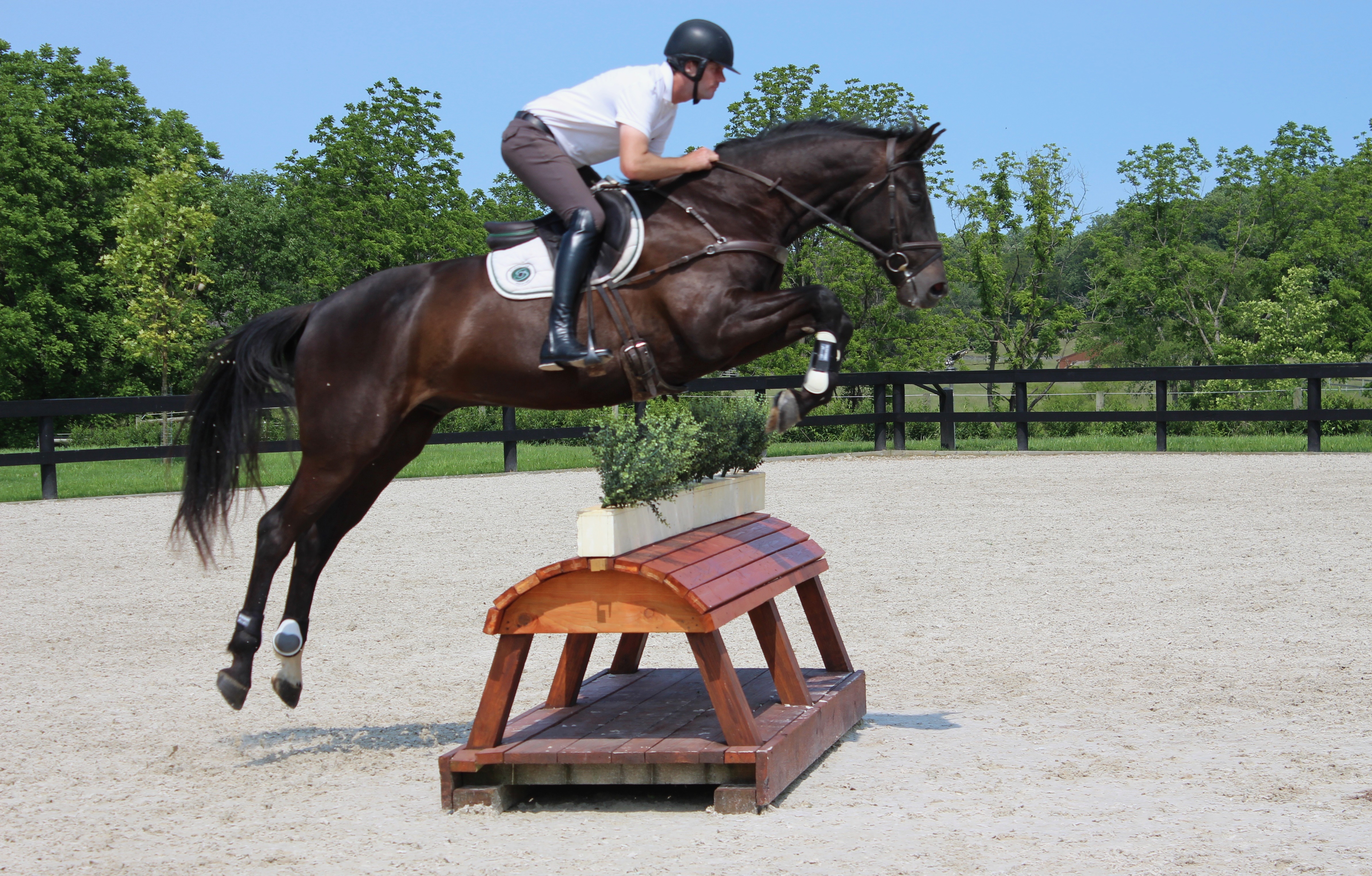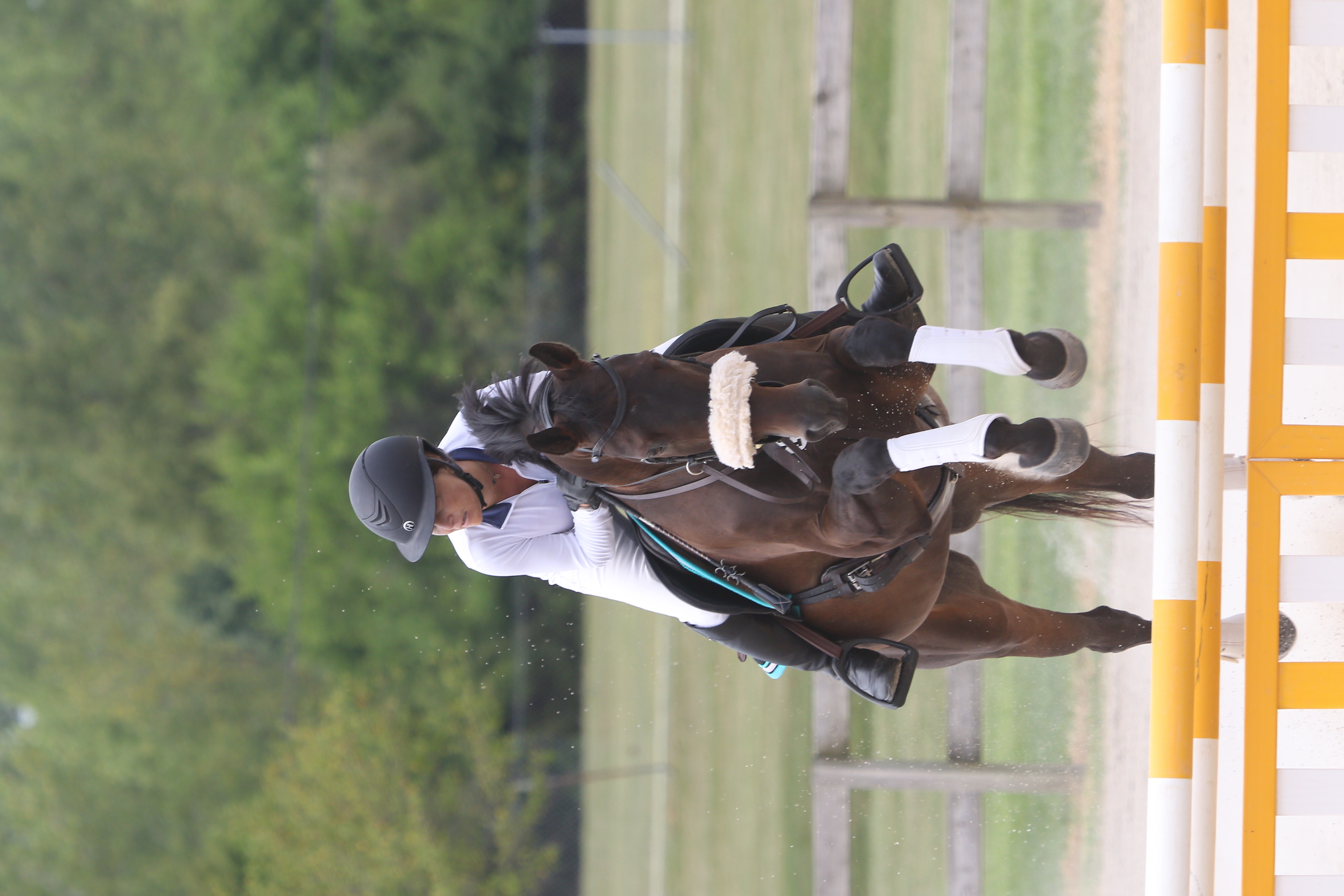
Meg Pellegrini and Dondante. Photo by Shannon Brinkman Photography.
Five-star horses are a different breed than the average event horse. They have that little something extra—whether it be extra scope, extra heart, extra intelligence, or just that extra desire to make it happen.
The highest level of the sport demands a lot from both humans and horses as athletes. But at some point, the time comes to step down from that level. And stepping down can often be almost as challenging as stepping up. Just as an Olympic gymnast might feel at a loss as to what to do with their career after retiring from elite sport, so too do these top-level horses have to find a job or a place to call home after retiring from the 5* level.
Dondante, the former ride of Will Coleman, has hit the jackpot with his post-5* career.
After sustaining and rehabbing from an injury in 2023, the now 15-year-old gelding known as “Al” in the barn is showing an up-and-coming rider the ins and outs of upper-level sport.
Meg Pellegrini has been fortunate enough to lease Al for the 2025 season—a situation that is mutually beneficial, as it allows the horse to continue doing what he loves, and gives Meg some incredible experience learning from one of the best-educated and most-accomplished horses in the country.
I caught up with Meg to learn about how she got the ride and what it’s been like to develop a partnership with the horse so far.

Will Coleman and Dondante compete at Kentucky. Photo by Shelby Allen.
“Not many people get handed the reins to a horse like this—I’m beyond lucky,” explains Meg. The opportunity for Meg to partner with Al arose organically. Will has coached Meg for the past few years, and as Meg tells it, she was a huge fan of the horse from the very beginning. She was out on a hack with Will one day, and he pointed out Al in the paddock and mentioned that he would be coming back into work soon. As it turned out, Will allowed Meg to pick up the reins on the tall gelding, along with his employees, as the horse slowly came back into fitness and strength.
That, it turned out, was a great way for Meg to get to know the horse. “Bringing him back into work was the best way to build a bond,” she says, particularly because there was a steady timeline and a major focus on basics as he came back. “It was the best-case scenario because I got to know him from the ground up,” she says, and “it meant I got to understand how he thinks, what he likes, and what he doesn’t. It built a bond I don’t think I would’ve had otherwise.”

Photo by USEF Eventing.
Although Al’s owners, Team Rebecca and the Four Star Eventing group, along with his former rider, Will, were impressed with how well the horse recovered and considered bringing the horse back to the 5* level, they ultimately decided that it would make sense for him to stay at a slightly lower level for the longevity of his career — a commendable decision.
Meg acknowledges that it’s not only a privilege, but a responsibility, to ride their lovely horse. She seems to understand that this opportunity came with trust—from Will and Katie Coleman, from the horse’s owners, and also from Al himself—and she seems to carry that with her every time she rides the horse.
Surely Al’s owners and Will had seen how Meg connected with Al in helping bring him back into work, and had also seen her dedication to learning about the sport. She explains that she and Al did not click immediately— “he wasn’t sure about me, and honestly, I wasn’t sure I’d be enough for him”—and that she had to figure out how he ticks. Because the 5* level is so demanding, and it takes so many years to get the horses to that level, the horses are often so specifically trained to their own rider’s cues that it can be tricky for another rider to take over the reins. It was a testament to Will’s training the Meg could communicate with the horse. “Somewhere along the way, we started to meet in the middle. I learned to listen and trust him.”

Photo courtesy of Meg Pellegrini.
Dondante was originally sourced from Richard Sheane in Ireland, and Will produced the horse from the very beginning of his career. He finished third in the USEA Young Event Horse 5-year-old championships in 2015, and thereafter climbed the levels to the top of the sport with incredibly consistent results at every level. In 2022, he finished in the top-10 at both Kentucky and Maryland 5*.
This spring, Al and Meg are contesting events at the Intermediate and 3* levels, with already some good results on the board, including a recent top-10 finish in the 3*-S at Tryon. Al looks thrilled to be back out on the field of play, and Meg is learning a huge amount from him. Meg admits that she has experienced confidence issues in the past couple of years that Al is really helping her sort out. In this way, the story is really cool: Meg is able to learn lessons from Al that she is now transferring to her other horses. “He’s been there, done that. I don’t have to worry about teaching him the ropes—he’s teaching me.” That kind of confidence in the job from Al has really given Meg her confidence again.
Any rider who goes through confidence issues—which, really, is every rider at some point or another—would do well to realize the reality of the slow, diligent process of regaining it. Part of that process includes having a horse who is forgiving, and Meg has been lucky to find that in Al. “Even when I make a mistake, he’s like, ‘Don’t worry, I got you.’” That professorial quality is undoubtedly one that will have a legacy as Meg brings her other horses up to the top of the sport.
Beyond confidence, such an experienced horse has also given Meg a window into how top-level horses go and think. “My first real run on him, I came out of the start box and thought, this is crazy—he’s just so powerful, but at the same time, he wants to do the right thing all the time.” That kind of experience, which can really only be felt, and not taught, is helping Meg in her quest to be successful at the 5* level herself.
I had one more question for Meg before we got off the phone: what was behind Al’s barn name? “Oh,” she says, “he’s named after Al Pacino.” Known for his audacity, the infamous actor is an appropriate namesake for the horse. It sounds like he will pass that audacity on in spades.
















































